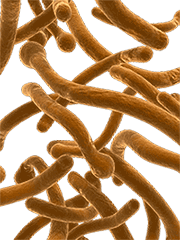Refined Sugar & Chronic Disease
Sugar Study (3) |
Chronic disease is rare in populations that do not consume refined, processed foods, of which sugar is a major component. These populations eat foods high in healthy carbohydrates and natural sugars from whole foods such as fruits, vegetables, unrefined grains, and legumes.
Even though both the Department of Agriculture and the American Heart Association advises us to cut down on our sugar intake, and studies have linked refined sugar intake directly to heart disease, the Sugar Association itself has decided to lay the blame squarely on the shoulders of the public. In a prepared statement, it claimed:
"We are confident that the American people are perfectly capable of choosing what foods to eat without stark regulations and unreasonable bans imposed upon them."
The fact that sugar is added to foods that shouldn't contain sugar to begin with, and that it appears under many deceptive names on food labels, appears irrelevant.
A recent Harvard study revealed that sugar-sweetened beverages are linked to more than 180,000 obesity-related deaths worldwide each year. Let's look at 6 other sugar studies:
In 2009, Dr. Robert Lustig gave a lecture that has now been viewed by millions of people on You Tube. The 90-minute discussion is called "Sugar: The Bitter Truth." Lustig is a specialist on pediatric hormone disorders and a leading expert in childhood obesity at the University of California, San Francisco School of Medicine. Lustig concluded that, similar to alcohol and tobacco, refined sugar is a toxin. He also concluded that it is not the calories in refined sugar that pose the problem - it is the sugar itself.
Blood Sugar, Insulin, & Diabetes
Words such as "insulin" and "diabetes" and "hypoglycemia" have become household terms since diabetes has become a health epidemic. Sugar intake is blamed as the primary culprit, but most of us do not understand why, nor do we fully understand what these words actually mean. Let's take a look at some definitions and learn what parts sugar and insulin play in diabetes.
Blood sugar is released by glands within a part of the body called the endocrine system. This system influences the functioning of our entire body, and produces hormones that control the release of blood sugar. It is crucial in regulating our growth and development, healthy cellular growth and function, metabolism, sexual, and reproductive health.
Two hormones called "insulin" and "glucagon" help keep blood sugar balanced after a meal and make sure there is enough to supply the fuel we need to maintain our energy level. It is important that the amount of glucose in our bloodstream is maintained at a constant level. Both insulin and glucagon are secreted by the pancreas.
Insulin Resistance - the Root of type 2 Diabetes
When our cells no longer respond normally to insulin produced by the pancreas and cannot use it as effectively, the body loses its ability to maintain a steady and balanced blood sugar level. This is what we call insulin resistance. Because the insulin can no longer control the blood sugar, the blood sugar level begins to rise. The pancreas responds by pumping out more and more insulin in an attempt to try and lower the rising blood sugar.
The blood sugar spikes and crashes, and eventually, the pancreas can no longer keep up with the demand for insulin and blood sugar rises out of control, spilling over into the urine. The body cannot make enough insulin to keep the blood glucose at normal levels, and we may then be diagnosed with type 2 diabetes, one of the top 5 killers in the US.
Metabolic Syndrome
Not everyone who is insulin resistant becomes a diabetic. But having chronically elevated insulin levels can result is higher triglyceride levels and blood pressure, lower levels of HDL cholesterol (the “good cholesterol”), and weight gain. Collectively, these symptoms are known as metabolic syndrome (also known as Insulin Resistance Syndrome). Metabolic syndrome is a major risk factor for both heart disease and diabetes (meaning that if you have this risk factor, you are more likely to suffer from heart disease or diabetes). The CDC now estimates that some 75 million Americans have metabolic syndrome.
Type 1 Diabetes
With type 1 diabetes, the pancreas is unable to produce any insulin and individuals must rely on daily injections of insulin to help keep their blood sugar from rising too high. Type 1 diabetes (previously known as "'juvenile-onset diabetes"), develops in childhood or early adulthood.

Hypoglycemia
The flip side of diabetes is hypoglycemia. Here, the pancreas overreacts to the concentrated sugar and releases too much insulin. Blood sugar levels rapidly fall far below normal levels, creating symptoms of fatigue, headaches, depression, and irritability. After a quick "sugar fix" the symptoms magically disappear... until the next time. The cycle continues, and the spikes and crashes of refined and highly concentrated sugars contribute to hypoglycemia.
Frequently, the pancreas wears out over time from the over-stimulation, and hypoglycemia can turn into diabetes.
What Causes Insulin Resistance?
So, what causes the initial insulin resistance? Studies show that a likely cause is the accumulation of fat in the liver as there is a direct correlation between liver fat and insulin resistance. Excess sugar consumption can lead to increased fat production in the liver and the development of diabetes.(7) People who eat high amounts of sugar have a higher level of fat in their blood than people who eat no refined sugar, which contributes to plaque build-up in the arteries and hardening of the arteries.
The High Fat Connection: Diabetes & Candidaisis
In a healthy body, we digest sugars and they pass through the intestines and into the bloodstream. They are then moved out of the bloodstream and into the cells of organs and tissues to provide fuel for the body (and the brain, which uses glucose as its primary fuel). But when we eat a high fat diet, the sugar remain in the bloodstream longer than it should as it is processed much more slowly. Let's see how:
- The pancreas is responsible for producing insulin, which transports the sugar molecule out of the blood vessels and into the cells of the body.
- When there is too much fat present in the blood, the fat forms a coating around the sugar molecules, the insulin, and the walls of the blood vessels. This "insulating" mechanism prevents the insulin from effectively binding to the sugar molecule, drastically reducing the movement of the sugar out of the bloodstream. Many type 2 diabetics produce enough insulin, however their high fat diet affects how the sugar is processed in the body.
- Blood sugar levels then rise as the sugar molecules are not released throughout the body to provide us with fuel in a timely manner.
- When fat levels drop, the sugar is then distributed throughout the body again as fuel (and for those with candidiasis, the yeast levels drop as there is no excess sugar to feed on).
Those who follow a high fat diet will always carry a high quantity of fat in the bloodstream. This means that blood sugar levels remain chronically elevated for sustained periods of time. Such eating habits lay the foundation for conditions such as candida, diabetes, chronic fatigue, and brain fog.
By reducing the fat in their diet to low levels of healthy fats from whole foods, many diabetics resolve their condition and no longer require any diabetes-related medications.
Do you suffer from either diabetes or candidiasis?
Heal yourself naturally in 30 days or less.
RELATED ARTICLES
- Choosing natural sweeteners
- Health dangers of artificial sweeteners
- Refined sugar
- Refined sugar & chronic disease
- Soda's, pop & energy drinks
- Additives & chemicals in our food
- What are processed & refined foods
- The Dirty Dozen: What they are & why you should avoid them
- Addicted to sugary foods? Kick that addiction now
- Get off the diet merry-go-round
- Healthy food choices for children
- Healthy food choices for pets
- The FDA: Failure to protect human & pet food
- Food pyramids & food politics




 Learn about food enzymes & why enzyme depletion negatively affects our health:
Learn about food enzymes & why enzyme depletion negatively affects our health: